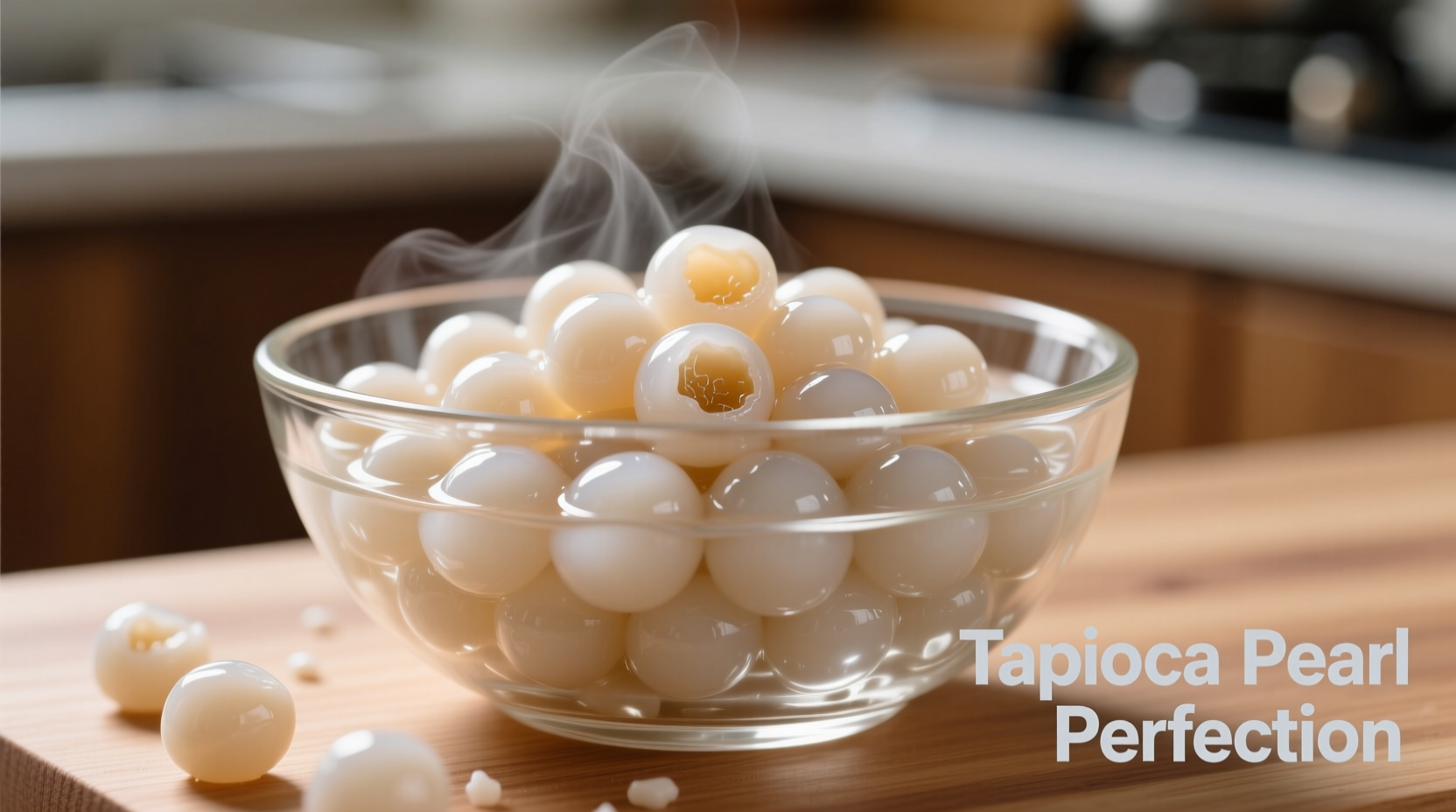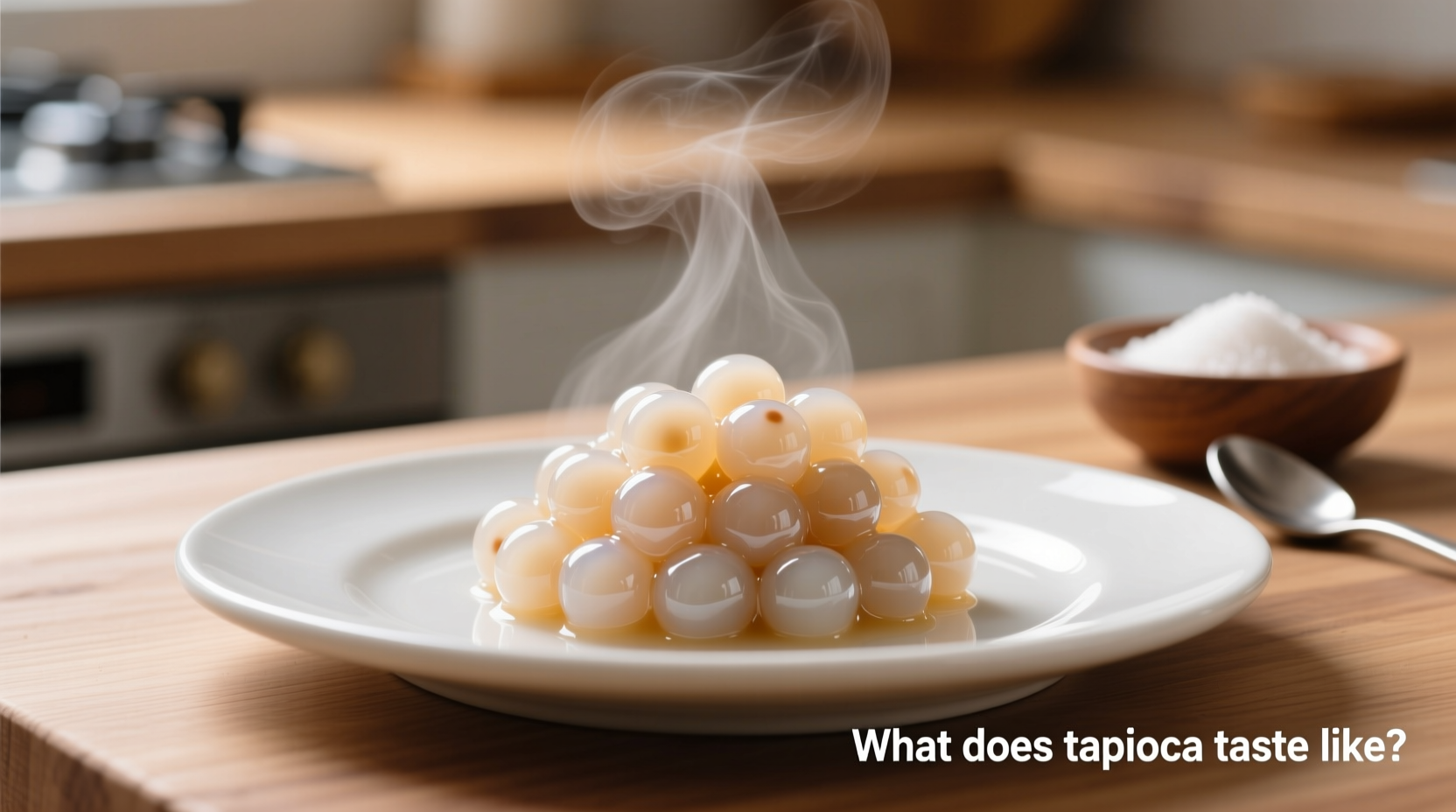Curious about that chewy element in your bubble tea or the smooth texture in Brazilian cheese bread? Understanding tapioca's taste characteristics helps you use this versatile ingredient effectively in cooking and baking. Unlike starches with distinct flavors, tapioca serves as a culinary blank canvas that enhances texture without altering taste profiles.
The Basic Nature of Tapioca Flavor
Tapioca, derived from the cassava root (Manihot esculenta), begins as a naturally bland starch. According to the Food and Agriculture Organization of the United Nations, raw cassava contains compounds that must be properly processed to remove potential toxins, resulting in the neutral-tasting tapioca we use in cooking. This processing eliminates most inherent flavors, leaving behind what food scientists call a "textural agent" rather than a flavor contributor.
When you bite into properly cooked tapioca pearls, you'll notice:
- A clean, almost imperceptible sweetness (about 5-10% of sugar's sweetness)
- No competing flavors that would clash with beverages or desserts
- A pure starch mouthfeel without graininess
- Remarkable ability to absorb surrounding flavors like tea, fruit syrups, or dairy
How Processing Affects Tapioca's Taste Profile
The form tapioca takes dramatically influences how we perceive its flavor characteristics. This processing timeline shows how cassava transforms from bitter root to neutral ingredient:
- Raw Cassava Root - Contains cyanogenic glycosides (naturally occurring compounds that can produce cyanide), giving it a bitter, unpleasant taste
- Peeling and Washing - Removes surface compounds and reduces bitterness
- Grating and Pressing - Extracts starch while removing fibrous material and toxins
- Sedimentation and Drying - Produces pure starch with neutral flavor profile
- Final Product Forms - Pearls, flakes, or flour with virtually identical neutral taste
This careful processing, documented by researchers at CABI (Centre for Agriculture and Bioscience International), ensures the final product contains less than 0.02% cyanide compounds—well below safety thresholds—resulting in the neutral taste we expect.
| Starch Type | Natural Flavor Profile | Sweetness Level | Best Culinary Uses |
|---|---|---|---|
| Tapioca | Neutral with subtle sweetness | 5-10% of sugar | Bubble tea, gluten-free baking, thickening sauces |
| Cornstarch | Slightly corn-like aftertaste | Nearly flavorless | Pie fillings, gravies, stir-fry sauces |
| Potato Starch | Earthy, potato-like notes | None | Clear soups, delicate sauces, matzo balls |
| Rice Starch | Very mild rice flavor | None | Asian desserts, rice noodles, light thickening |
Culinary Applications and Flavor Behavior
Tapioca's true culinary value lies in what food chemists call its "flavor neutrality." In bubble tea, the pearls absorb the tea and sugar syrup, taking on those flavors while providing satisfying chew. In Brazilian pão de queijo (cheese bread), tapioca flour creates that distinctive pull-apart texture without competing with the cheese flavor.
Professional chefs like Antonio Rodriguez note that "tapioca's magic happens in the texture department—it's the supporting actor that lets other flavors shine. When I make coconut tapioca pudding, the tapioca disappears flavor-wise, leaving only that luxurious mouthfeel while the coconut takes center stage."
This behavior explains why tapioca works in both sweet and savory applications. In Filipino cassava cake, it takes on coconut and vanilla flavors. In Vietnamese banh bot loc (clear dumplings), it showcases the shrimp filling without interference.
Common Misconceptions About Tapioca Taste
Several myths persist about tapioca's flavor profile:
- "Tapioca tastes like bubble tea" - Actually, the pearls themselves are neutral; the tea flavor comes from the beverage they're soaked in
- "All starches taste the same" - Cornstarch has a slight corn aftertaste, potato starch carries earthy notes
- "Tapioca is naturally sweet" - Its mild sweetness is barely perceptible without added sugar
- "Raw tapioca is safe to eat" - Proper processing is essential as raw cassava contains harmful compounds
Practical Tips for Cooking with Tapioca
To maximize tapioca's textural benefits while understanding its flavor limitations:
- For bubble tea pearls: Always soak cooked pearls in flavored syrup immediately—they'll absorb 3-4 times their weight in liquid within 15 minutes
- In baking: Replace up to 25% of wheat flour with tapioca flour for improved texture without flavor changes
- When thickening: Mix tapioca starch with cold liquid first to prevent clumping—it thickens at lower temperatures than cornstarch
- For puddings: Combine with dairy and vanilla early in cooking to allow flavor absorption during gelatinization

Remember that improperly cooked tapioca can develop off-flavors. Undercooked pearls remain hard and starchy-tasting, while overcooked pearls become mushy and lose their distinctive chew. The ideal texture comes from precise timing: most pearls require exactly 25-30 minutes of boiling followed by 10 minutes of resting in the hot water.
When Tapioca's Taste Matters (and When It Doesn't)
Understanding tapioca's context boundaries helps determine when its neutral profile is advantageous:
- Flavor matters most: In delicate desserts like French panna cotta where even subtle starch flavors would interfere
- Texture matters most: In bubble tea where chew provides sensory satisfaction without competing with tea flavors
- Flavor absorption is key: In mochi donuts where tapioca soaks up glaze flavors during frying
- Neutral base needed: In gluten-free baking where other starches might introduce unwanted flavors
Food science research from Cornell University's Department of Food Science confirms that tapioca's amylopectin structure (about 83% of its composition) creates this unique behavior—providing viscosity without flavor interference, unlike starches with higher amylose content that can develop stale flavors.











 浙公网安备
33010002000092号
浙公网安备
33010002000092号 浙B2-20120091-4
浙B2-20120091-4